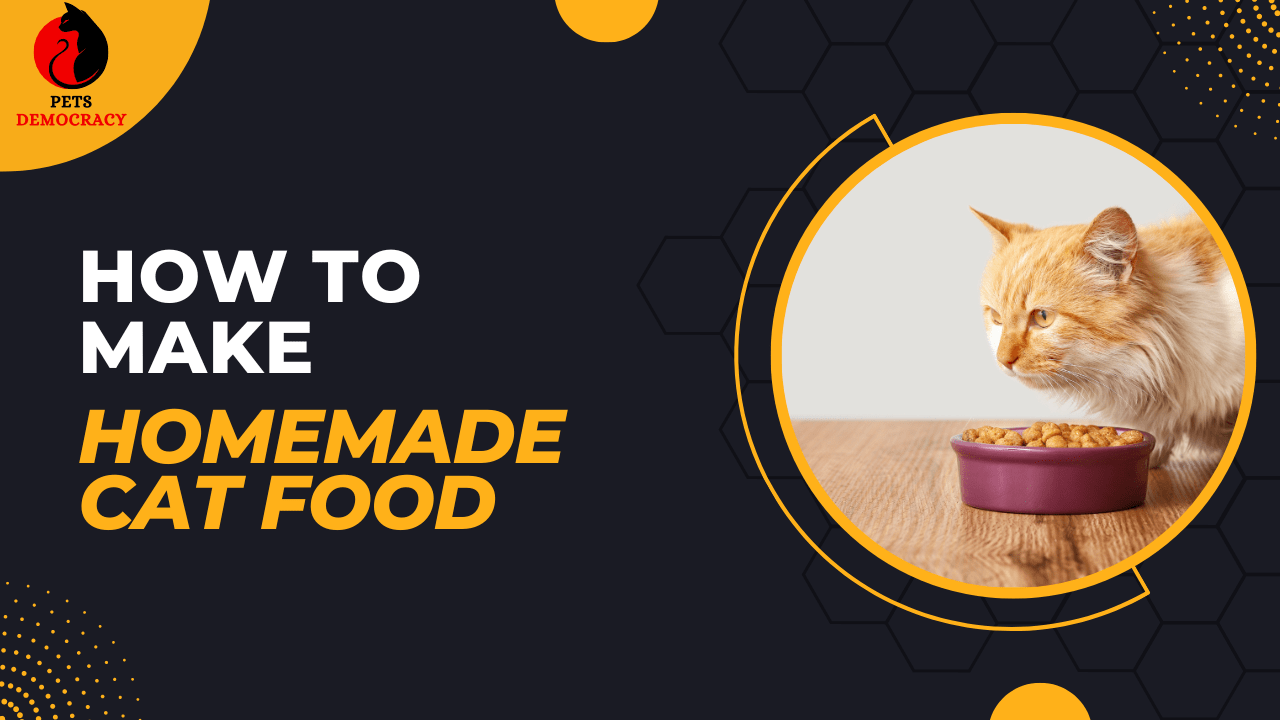
In this guide, we will explore the benefits of homemade cat food, essential ingredients, and detailed recipes, including how to make homemade cat food with chicken and special considerations for senior cats.
Feeding your feline friend the best possible diet is crucial for their health and well-being. Commercial cat foods are convenient but may contain preservatives, fillers, and other ingredients that aren’t ideal for your pet.
Learning how to make homemade cat food can ensure that your cat gets the freshest and most nutritious meals tailored to their specific needs.
By the end of this article, you’ll be equipped with the knowledge to provide your furry friend with balanced and delicious homemade meals.
Benefits of Homemade Cat Food
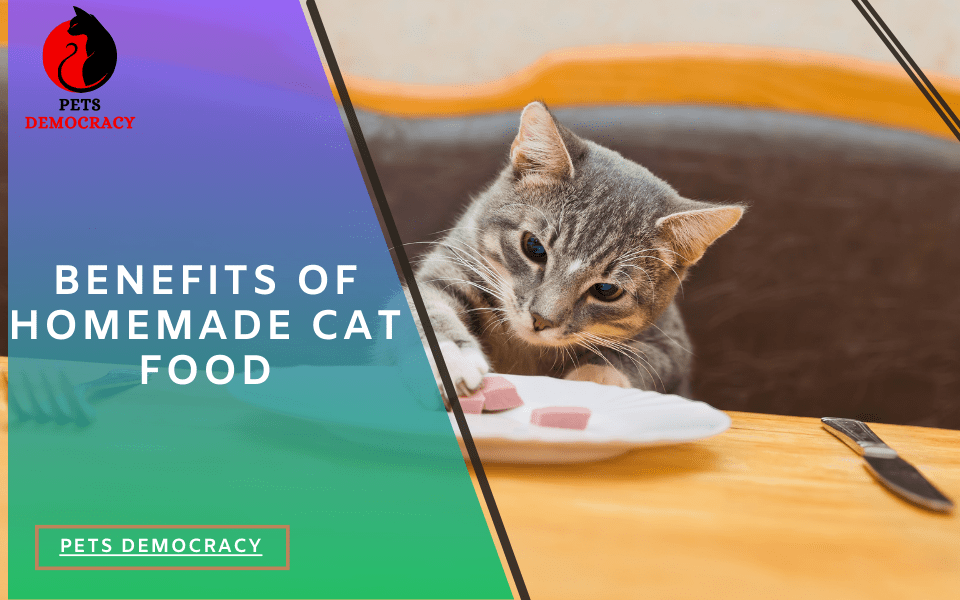
Control Over Ingredients
You have total control over the ingredients in your cat’s diet when preparing homemade cat food. This means you can avoid harmful additives and fillers commonly found in commercial cat foods.
Improved Nutrition
Homemade cat food allows you to tailor your cat’s diet to meet their specific nutritional needs. You can ensure a balanced intake of proteins, fats, vitamins, and minerals essential for your cat’s health.
Better for Sensitive Cats
Some cats have food sensitivities or allergies that make commercial cat food unsuitable. Homemade recipes can be adjusted to avoid allergens and include ingredients that your cat tolerates well.
Freshness and Quality
Homemade cat food is often fresher than store-bought options. You can select high-quality, fresh ingredients that provide superior nutrition and taste.
How to Make Homemade Cat Food: Essential Ingredients
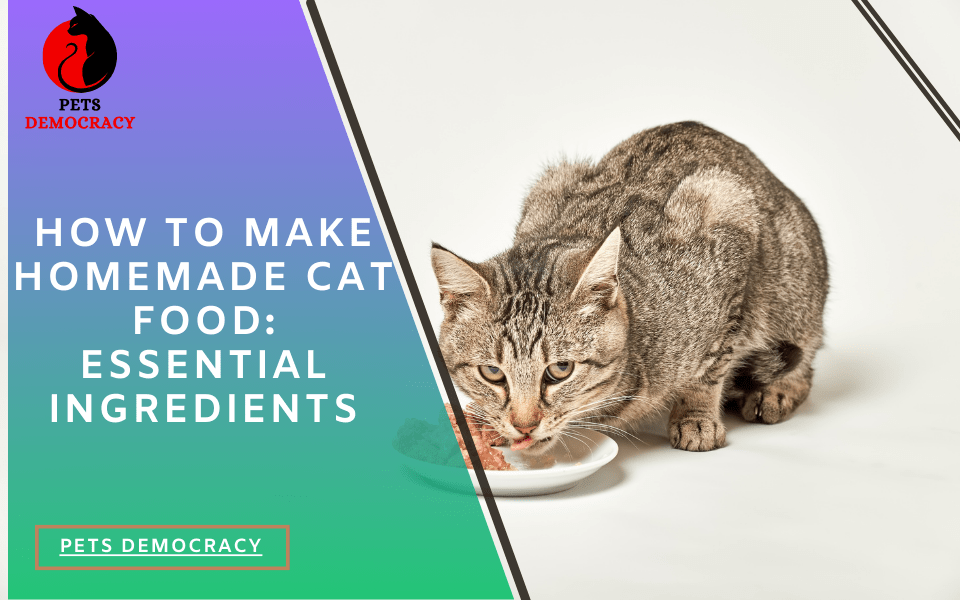
Protein Sources
Due to their obligate carnivorous nature, cats need a diet heavy in animal protein. Good sources of protein include:
- Chicken (breast, thighs, liver)
- Turkey
- Fish (salmon, tuna, mackerel)
- Beef
- Lamb
Healthy Fats
Fats are an essential energy source and help with the absorption of fat-soluble vitamins. Healthy fat sources include:
- Fish oil
- Chicken fat
- Olive oil
Carbohydrates and Fiber
While cats need very few carbohydrates, some fiber is necessary for digestive health. Suitable options are:
- Cooked pumpkin
- Sweet potatoes
- Peas
- Carrots
Vitamins and Minerals
To ensure your cat receives all necessary nutrients, consider adding:
- Taurine (an essential amino acid for cats)
- Calcium supplements (if not using bone-in meats)
- Multivitamin supplements designed for cats
How to Make Homemade Cat Food with Chicken
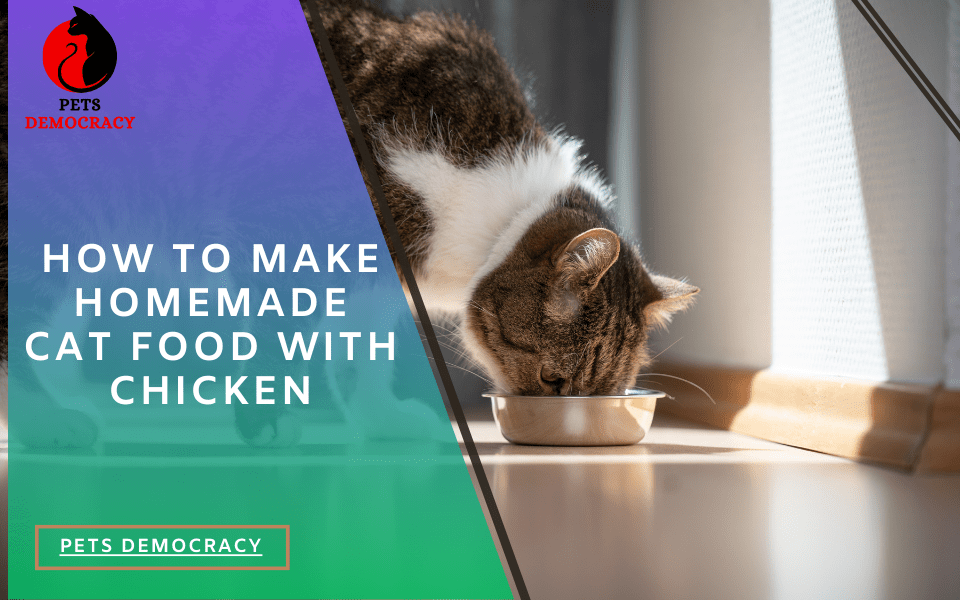
Ingredients
- 1 lb boneless, skinless chicken thighs
- 1/2 cup cooked pumpkin
- 1/2 cup cooked peas
- 1 tablespoon fish oil
- 2 capsules of taurine supplement
- 1/4 teaspoon calcium powder
Instructions
- Prepare the Chicken: Cook the chicken thighs thoroughly, ensuring no pink remains. Once cooked, chop or shred the meat into small, bite-sized pieces.
- Cook the Vegetables: Steam or boil the peas and pumpkin until tender. Mash them slightly to make them easier to mix with the chicken.
- Combine Ingredients: In a large bowl, mix the chicken, pumpkin, and peas. Add the fish oil, taurine supplement, and calcium powder. Stir well to ensure an even distribution of ingredients.
- Serve or Store: Portion out the food according to your cat’s daily intake needs. Store leftovers in an airtight container in the refrigerator for up to three days or freeze for longer storage.
How to Make Homemade Cat Food for Senior Cats
Ingredients
- 1 lb ground turkey
- 1/2 cup cooked sweet potatoes
- 1/2 cup cooked carrots
- 1 tablespoon olive oil
- 2 capsules of glucosamine supplement (optional, for joint health)
- 1/4 teaspoon multivitamin powder
Instructions
- Cook the Turkey: Brown the ground turkey in a skillet over medium heat until fully cooked. Drain any excess fat.
- Prepare the Vegetables: Steam or boil the sweet potatoes and carrots until soft. Mash them well.
- Mix Together: In a large bowl, combine the cooked turkey, mashed sweet potatoes, and carrots. Add the olive oil, glucosamine supplement, and multivitamin powder. Mix thoroughly.
- Serve or Store: Portion the food according to your senior cat’s dietary needs. Store in an airtight container in the refrigerator for up to three days or freeze for longer storage.
How to Make Homemade Cat Food Recipes: Tips and Variations
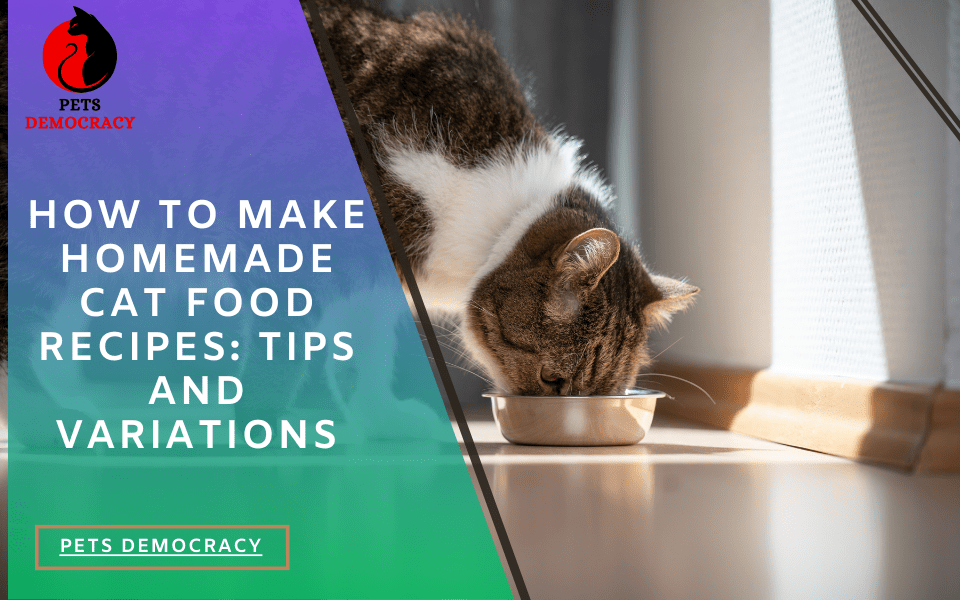
Rotating Protein Sources
To ensure a balanced diet, rotate different protein sources such as chicken, turkey, beef, and fish. This prevents nutritional deficiencies and keeps your cat interested in their food.
Including Organ Meats
Organ meats like liver and kidney are rich in essential nutrients and should be included in your cat’s diet. However, they should be given in moderation to avoid vitamin A toxicity.
Balancing Nutrients
Cats require specific nutrients like taurine, calcium, and certain vitamins that might be lacking in homemade recipes. Always consult with a veterinarian to ensure your homemade cat food meets all nutritional requirements.
Hydration
Homemade cat food can be moistened with a little water or broth to ensure your cat stays hydrated, especially if they are prone to urinary tract issues.
Frequently Asked Questions
What are the benefits of making homemade cat food?
Homemade cat food offers better control over ingredients, improved nutrition, and freshness. It is especially beneficial for cats with food sensitivities or allergies.
How do I know if my homemade cat food is nutritionally balanced?
Consult with a veterinarian or a pet nutritionist to ensure that your homemade cat food recipes provide all the necessary nutrients. They can recommend supplements to add to your recipes.
Can I use raw meat for homemade cat food?
Some pet owners choose a raw diet for their cats, but it comes with risks such as bacterial contamination. If you opt for raw, ensure you follow strict handling and hygiene practices, and consult with a veterinarian.
How much homemade cat food should I feed my cat?
The amount depends on your cat’s age, weight, and activity level. On average, an adult cat needs about 200-300 calories per day. Adjust portion sizes accordingly and monitor your cat’s weight and health.
How long can homemade cat food be stored?
Homemade cat food can be stored in the refrigerator for up to three days. For longer storage, freeze the food in portion-sized containers for up to three months.
What are some good protein sources for homemade cat food?
Good protein sources include chicken, turkey, beef, lamb, and fish. Including a variety of protein sources can help ensure a balanced diet.
Can I include grains in my homemade cat food?
Cats have a limited ability to digest grains, so it’s best to use them sparingly. Focus on high-protein and low-carbohydrate ingredients for optimal health.
Conclusion
Learning how to make homemade cat food can be a rewarding experience for both you and your feline friend.
By understanding your cat’s nutritional needs and incorporating high-quality ingredients, you can provide meals that support their health and well-being.
Remember to consult with a veterinarian to ensure that your homemade recipes meet all the essential dietary requirements. With a little effort and knowledge, you can create delicious and nutritious meals that your cat will love.


